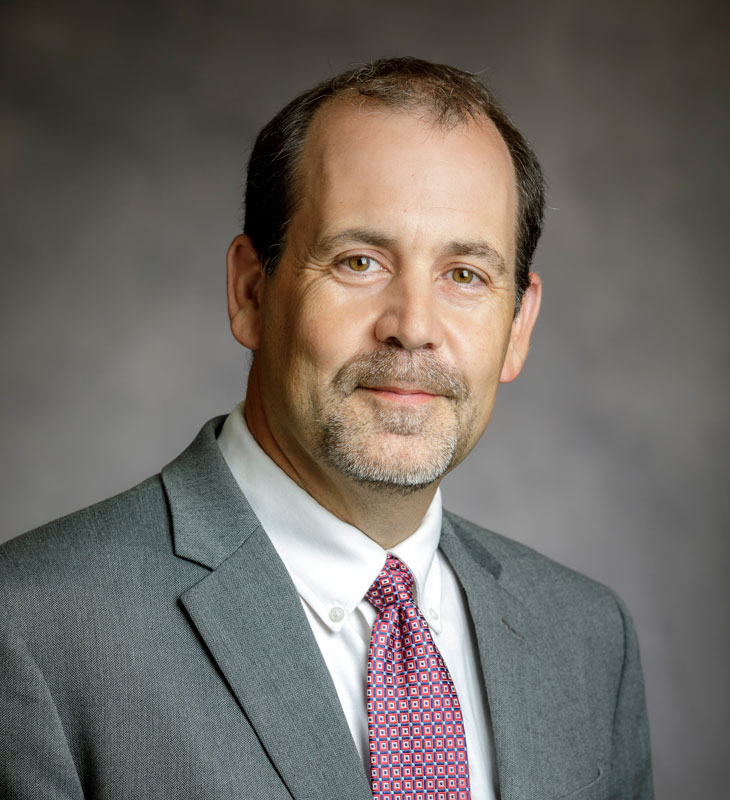
From Abstract to Reality: Veterinary Epidemiologist Helps to Fight Spread of COVID-19
Thursday, April 30, 2020
Jared Taylor, DVM, MPH, Ph.D., DACVIM, DACVPM is an associate professor in the Department of Veterinary Pathobiology at Oklahoma State University’s College of Veterinary Medicine. At the onset of the COVID-19 pandemic, Taylor was asked to serve as the epidemiologist on the OSU team to help curb the spread of COVID-19. The OSU team includes Taylor, Goutam Chakraborty, Ph.D., SAS, professor of Marketing Analytics, Glen Krutz, Ph.D., professor and dean of the College of Arts and Sciences, and Mindy McCann, Ph.D., professor and department head of Statistics. Together with a University of Oklahoma team and interim state epidemiologist Aaron Wendelboe, Ph.D., they traveled to Oklahoma City to present preliminary findings to Governor Stitt and some members of his cabinet.
“We are focused primarily on trying to predict hospitalizations on a continuous basis—how many hospital beds are we going to need on a given day, ICU capacity, the number of ventilators used, and fatalities. The modeling that we are doing is very abstract,” said Taylor. “Over the course of the subsequent month, we have managed to refine that to a point that I feel like it does have some value and some utility. You cannot predict what happens in the real world. My role is to advise.”
Taylor anticipates continuing this work into early summer.
“We talk pretty much every day,” said Taylor. “The time demand has been extraordinary. I usually put in 40 hours a week doing this alone besides my regular job of teaching and conducting research. We may very well go on beyond the summer depending on when the second wave comes and maybe even a third wave and how prepared we are to deal with that. Our job is to make sure we have a tool that helps decision makers moving forward make the best decisions they can.
“One unique aspect of our model is that we tried to take into account the demographics of our state in terms of urban versus rural population and the age demographics of our population. We have already seen a notable shift to more cases in rural communities than proportionately we should. Obviously, they are still not big numbers, those are still associated with the cities. However, when you look at the proportion of the population that’s in the cities versus the rural areas, we are seeing disproportionately more cases in the rural areas. Our fear is that it’s just been a slower process developing. As communities reopen, we fear the rural communities are going to begin bearing an even heavier burden of disease relative to other parts of the state.”
As the state begins to reopen, Taylor has some words of advice.
“Where we go from here depends upon people and their actions and choices. We understand the economic consequences and pain caused by the shutdown. But there will be a second wave. What that second wave looks like, I believe, is really going to depend on the choices and behaviors people engage in. The predictions made before were not wrong. Lots of folks look and say, ‘well those early models were completely wrong; we have nowhere close the cases predicted.’ We got nowhere close to those predictions because we took interventions. The early models were not designed to say what will happen if we do things. The avoidance of the early models should be seen as success, not seen as indications that the estimates were terrible to begin with. We should continue to practice social distancing as best we can. We should consider using masks, sanitation, all of those behaviors. It’s important that we keep people healthy. What happens next will depend upon the actions and behaviors of people.”
MEDIA CONTACT: Taylor Bacon | Public Relations and Marketing Coordinator | 405-744-6728 | taylor.bacon@okstate.edu
